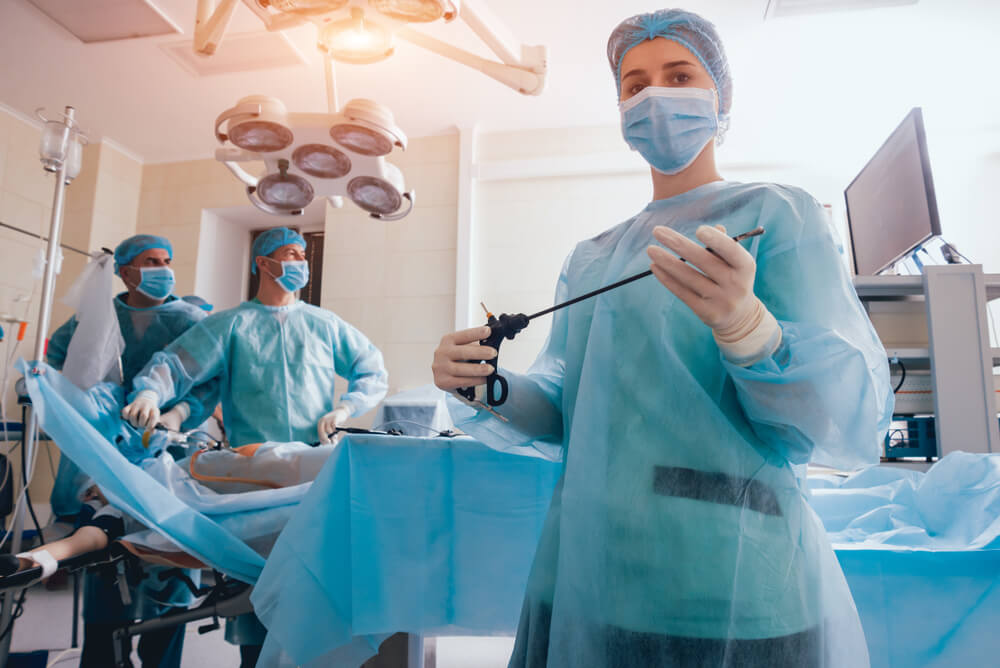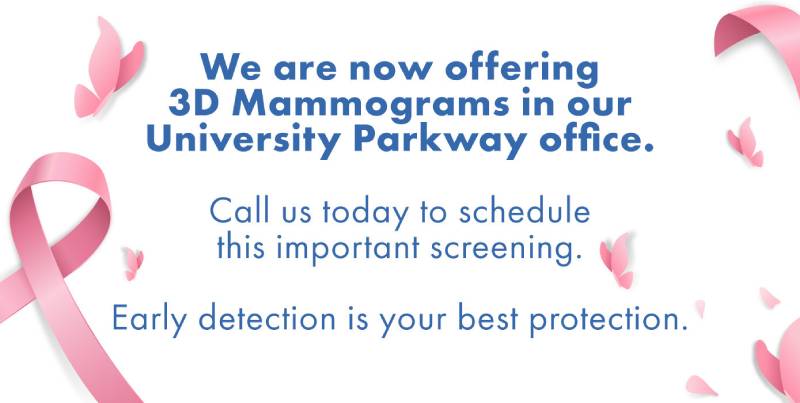What is laparoscopy? Welcome to our comprehensive guide on laparoscopy or laparoscopic surgery, a valuable diagnostic and surgical procedure that plays a crucial role in women’s health, especially in gynecology. In this article, we will take you through the procedure, preparation, recovery, potential risks, and what to expect post-surgery.
That said, the caring team at University Park OBGYN gives you all the essential information on laparoscopy.
What is Laparoscopy?

Laparoscopy, often referred to as keyhole surgery or laparoscopic surgery, is a minimally invasive procedure used to explore and treat conditions within the pelvis. It lets your surgeon examine your uterus, fallopian tubes, and ovaries. This versatile technique is employed to diagnose and treat various gynecological conditions, offering a safer alternative to traditional open surgery.
When Is Gynecological Laparoscopy Necessary?
Your healthcare provider may recommend a gynecological laparoscopy for several reasons, including:
- Diagnosis and treatment of endometriosis
- Removal of scar tissue (adhesions)
- Treating an ectopic pregnancy
- Sterilization procedures
- Diagnosing and removing ovarian cysts
- Hysterectomy (removal of the womb) or oophorectomy (removal of ovaries)
- Treating fibroids
- Investigating persistent pelvic pain
- Fertility assessment
- Cancer diagnosis or staging
Before the procedure, your doctor will discuss the reasons for recommending gynecological laparoscopy and outline the potential benefits and risks. It’s essential that you feel fully informed and comfortable with the procedure, as you’ll be asked to sign a consent form.
Preparing for Gynecological Laparoscopy
A gynecologist typically performs the procedure, and your hospital will provide you with detailed preparation instructions. In most cases, you can expect to go home on the same day, but occasionally, an overnight stay may be required. Having someone available to drive you home and stay with you for the first 24 hours is essential.
As gynecological laparoscopy is conducted under general anesthesia, you’ll need to fast from both food and drink for around six hours before the procedure. You can usually drink water up to two hours before the surgery, but make sure to confirm fasting instructions with your hospital.
Your doctor may recommend wearing compression stockings to prevent deep vein thrombosis (blood clots). In some cases, you might receive anticlotting injections for added protection.
The Gynecological Laparoscopy Procedure
The procedure typically lasts about 30 minutes to an hour for diagnostic purposes and longer if any treatment is required. Here’s a simplified breakdown:
- Incisions: Your doctor will make a small incision in your lower abdomen, usually near your navel.
- Carbon Dioxide: They will insert a needle to inflate your abdomen with carbon dioxide gently. This provides better visibility and space for surgical instruments.
- Laparoscope: A laparoscope, equipped with a camera and light, is inserted through the same incision to visualize the internal organs. The camera feeds images to a monitor for the surgeon’s reference.
- Additional Incisions: Your doctor may make one or more small incisions to pass through specialized instruments needed for the procedure.
- Closing Up: After completing the procedure, the carbon dioxide is released, and your incisions are closed with stitches or glue.
Laparoscopic Surgery: Aftercare
Following the procedure, you’ll need to rest until the effects of the anesthesia wear off. While some discomfort is expected as the anesthesia dissipates, you’ll be offered pain relief.
If it’s a diagnostic laparoscopy, you can usually return home the same day once you feel ready. In the case of treatment, your medical team may advise an overnight stay. Before leaving, your nurse will provide wound care instructions and possibly schedule a follow-up appointment.
It’s important to note that the initial 24 hours after the general anesthetic might leave you feeling uncoordinated or with reduced cognitive clarity. Avoid driving, consuming alcohol, operating machinery, or making important decisions during this period.
Stitches may dissolve on their own, but if you have non-dissolvable stitches, a practice nurse at your GP surgery can remove them after about five to seven days.
Laparoscopic Surgery: Recovery
Recovery times vary depending on the complexity of the procedure. For diagnostic and minor procedures, you can typically resume your usual activities within about three days. More intricate surgeries may require two to three weeks for a complete recovery.
You may experience some post-operative discomfort, but your hospital will provide pain relief options. Additionally, expect some vaginal bleeding or spotting, which can be managed with sanitary pads.
To prevent blood clots, maintain mobility, especially if you’re resting. Your doctor might recommend wearing compression stockings or undergoing blood-thinning injections.
Don’t drive for at least 24 hours after the general anesthetic, and do so only when you feel comfortable and free of discomfort. Remember to check your insurance company’s specific conditions regarding driving post-surgery.
It’s essential to listen to your body and progress at a pace that suits your individual recovery. Engaging in light activities like short walks can help regain strength and prevent stiffness. Always consult with your healthcare provider for personalized guidance on when it’s safe to return to more strenuous activities.
Sexual activity can typically resume when you feel ready. On that note, while sexual activity can usually resume when you feel comfortable, remember that open communication with your partner is vital to ensure both physical and emotional readiness. It’s entirely normal for intimate activities to vary in comfort levels during the recovery period.
Laparoscopic Side-Effects and Complications
Side effects are usually temporary and can include a small amount of vaginal bleeding, mild tummy discomfort, shoulder pain (from the gas used), increased fatigue, and minor bruises around incision sites.
Serious complications are rare but can include wound infection, urinary infection, hernia near incisions, or damage to internal organs or blood vessels. Seek immediate medical attention if you suspect complications.
Is Laparoscopy Safe?

Laparoscopy is generally considered a safe procedure when performed by a skilled and experienced healthcare provider. It offers several advantages over traditional open surgery, including smaller incisions, less scarring, shorter recovery times, and reduced risk of infection. However, as with any medical procedure, there are potential risks and complications associated with laparoscopy.
If You Have Any Further Questions
Gynecological laparoscopy is a versatile procedure that can aid in both diagnosis and treatment. While it carries some potential risks, the likelihood of complications is generally low, and your healthcare team will take measures to minimize these risks. If you experience any unusual symptoms or have concerns post-surgery, don’t hesitate to contact your healthcare provider.
Remember, your well-being is the top priority. Rest, recover, and follow your healthcare provider’s post-operative instructions. If you have any questions or uncertainties, never hesitate to reach out for clarification and guidance. Your healthcare provider is there to support you throughout this journey towards better health and well-being.
To that end, you can always reach out to us to learn more about the procedure. Also, consider scheduling a consultation with us if you may need to undergo a procedure if you’ve received a previous diagnosis that calls for surgery.


